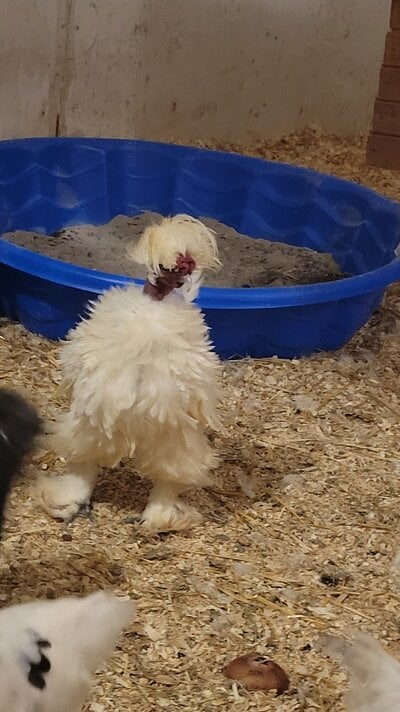Rooka_2
Songster
- Apr 18, 2021
- 78
- 71
- 101
Hey!
A couple questions.
First, please completely ignore the black mottled Houdan hen, shes my sons 4H show project and we keep her with our silkies because they're so gentle. We won't be hatching her eggs.
In this pen I have two roos, both pictured below. A showgirl frizzle and a.... blue? Grey? Im actually not sure what this color would be considered. I removed my white and splash roos 6 weeks ago so try and make some new colors and combos.
im completely new to this but here are my questions-
Will the blue/grey darken my paints genetics line?
my goal is paint frizzles, im completely aware you cannot breed frizzle to frizzle, I have another non hatching pen. Is there a way for me to increase my chances of getting paint frizzles?
Blue/grey came from a breeder with whites, blacks, blues and partridge. They were definitely mixed together so is there any chance I could possibly get any of those colors? All the whites and paints came from my silkies, I've only had whites and paints for the past two years and their colors have been consistent. These two roos are brand new to my flock and I'm just kinda experimenting to see what I get.
Any tips, tricks or insight? I'm brand new to this.



A couple questions.
First, please completely ignore the black mottled Houdan hen, shes my sons 4H show project and we keep her with our silkies because they're so gentle. We won't be hatching her eggs.
In this pen I have two roos, both pictured below. A showgirl frizzle and a.... blue? Grey? Im actually not sure what this color would be considered. I removed my white and splash roos 6 weeks ago so try and make some new colors and combos.
im completely new to this but here are my questions-
Will the blue/grey darken my paints genetics line?
my goal is paint frizzles, im completely aware you cannot breed frizzle to frizzle, I have another non hatching pen. Is there a way for me to increase my chances of getting paint frizzles?
Blue/grey came from a breeder with whites, blacks, blues and partridge. They were definitely mixed together so is there any chance I could possibly get any of those colors? All the whites and paints came from my silkies, I've only had whites and paints for the past two years and their colors have been consistent. These two roos are brand new to my flock and I'm just kinda experimenting to see what I get.
Any tips, tricks or insight? I'm brand new to this.





